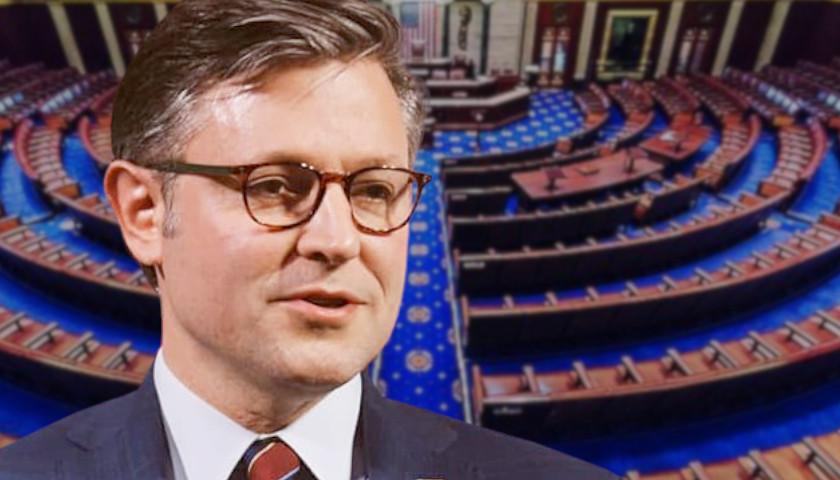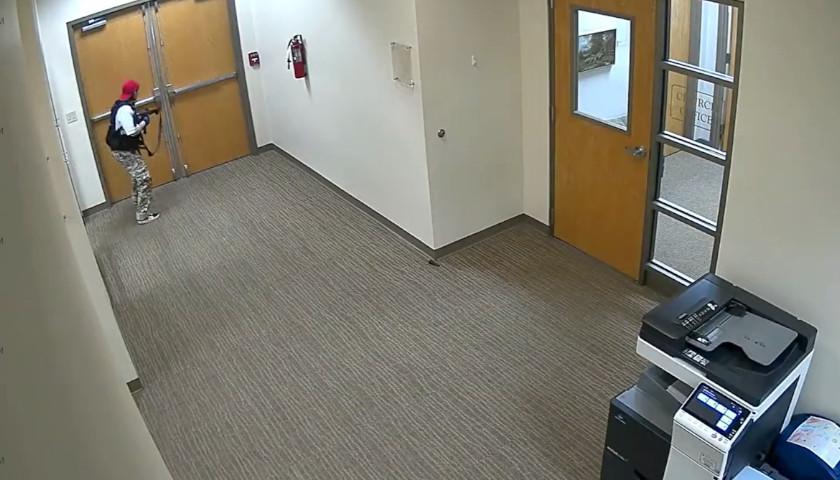Live from Music Row Friday morning on The Tennessee Star Report with Michael Patrick Leahy – broadcast on Nashville’s Talk Radio 98.3 and 1510 WLAC weekdays from 5:00 a.m. to 8:00 a.m. – host Leahy welcomed international relations expert and contributor for The Epoch Times, Dominick Sansone, in-studio to describe the topography of the Donbas region of Ukraine, where heavy fighting is taking place with Russia.
Leahy: We are joined on Music Row this morning by Dominick Sansone. Dominic writes for The Epoch Times and he is an expert on Eastern Europe. You spent some time there in Bulgaria.
Sansone: Yes. Bulgaria.
Leahy: What kind of scholar were you?
Sansone: Fulbright. Fulbright Grant.
Leahy: This is a pretty big deal to be a Fulbright [recipient], folks. And so you know a lot about Eastern Europe.
Sansone: I like to think so.
Leahy: And you are probably the best writer on what’s going on with the Russian invasion of Ukraine. It looks ominous, bad, terrible, dreadful. It doesn’t look like it’s going to have a good outcome in the near future. It’s been what, two months now since the Russian invasion?
Sansone: Two months.
Leahy: We’ll get to a little bit of the Biden maladministration missteps that led to this circumstance. But catch our audience up right now on what you know about what’s going on the ground in Ukraine. So there’s heavy fighting happening around Mariupol maybe you’ve heard that. I know I’ve heard it at the top of the hour news reports.
Leahy: Mariupol is a port city.
Sansone: That’s right.
Leahy: And it is in Eastern Ukraine.
Sansone: Yes.
Leahy: It is the key port that connects the Crimean Peninsula, which is a peninsula on the Black Sea that Russia basically took from Ukraine in 2014.
Sansone: That’s exactly right.
Leahy: And it is sort of on that narrow land bridge that as you go north and east from the Crimea, first you hit Mariupol, the port city, and then you keep going up north to the Donbas region. Right.
Sansone: Donbas, contiguous with that.
Leahy: The Donbas region of Ukraine borders Russia.
Sansone: Exactly right. Very heavy ethnically Russian. So that Mariupol, it’s on the Sea of Azov. So the Crimean Peninsula separates the majority of the Black Sea from the Sea of Azov.
It’s treated like a Russian Lake, especially now. And if they could kind of consolidate their control around it, it will really be a Russian Lake.
Leahy: So you’ve given me a good geography lesson.
Sansone: And then that’s contiguous with that Donbas region where we’re going to see the heaviest fighting now. So Mariupol reports that there’s some resistance holding out.
Our sources say it’s a heavy civilian concentrated area. Russian sources say it’s this neo-Nazi Battalion, which is kind of this neo-Nazi Battalion. The alleged neo-nazi Battalion.
Leahy: Is there any evidence to support this, quote, neo-Nazi?
Sansone: I don’t know if I would say there’s evidence. You’re going to get varying reports between each side. There’s certainly a nationalist group, but it’s a war for national survival, or at least that’s how they’re treating it. As far as that’s concerned, I’m not sure. But anyway, there’s just pretty minor resistance holding out in this Mariupol region.
Leahy: Let’s talk about the city of Mariupol. Population before the invasion was what? 600,000?
Sansone: Something like that.
Leahy: You look at the pictures of the city of 600,000.
Sansone: Terrible.
Leahy: What percentage of the buildings that were there before the invasion are still standing?
Sansone: Certainly not many. Not anything that it was close to before. Our Ukrainian sources and our sources are now reporting potentially unearthed mass graves in the region as well, that they’re, of course, attributing to the Russian forces. It’s really truly a harrowing situation.
Leahy: I’ve heard this attack, particularly as it relates to Mariupol and other areas. We can get to the other areas but in Mariupol in particular, looks to me like what the Russians intend to do is wipe Mariupol and its people off the face of the Earth.
That’s what the pictures look like to me. If you look at the buildings, it looks like 80 percent of them are destroyed. They’ve been bombed, hit with artillery. And then of the 600,000 people that were in Mariupol before the Russian invasion, how many are still in Mariupol?
Sansone: A fraction of that. Less than 100,000, if even near that number. As you said, the number of displaced civilians in the entire country is astronomical.
And especially in this region, as you said, it really seems like a campaign to totally destroy the city, to demolish it. And then, who knows, maybe rebuild it as now a Russian city.
Leahy: New Russian Mariupol.
Sansone: Exactly.
Leahy: We’ve seen this pattern throughout history. Typically, though, this is the kind of stuff that happened in medieval times when you’d wipe out a city and build a new one thereafter.
Sansone: Exactly. And what we’re moving into that Donbas region to those two southeastern republics now, of course, we’re going to start seeing some real serious land maneuver warfare that’s going to be reminiscent of the Second World War. There’s been nothing like that in Europe for over a half years.
Leahy: Since the Second World War. Physically, the topography of Donbas. Tell us, have you been to the Donbas?
Sansone: I haven’t been to the Donbas. I’ve never made it further east than Odessa.
Leahy: But you’ve been to Odessa.
Sansone: Yes.
Leahy: On the Black Sea.
Sansone: Yes. Beautiful city.
Leahy: And that’s a port city on the Black Sea. It’s to the west of Mariupol. Where else have you been in Ukraine?
Sansone: Kyiv. Then I traveled between sort of Kyiv and Odessa.
Leahy: Now it’s pronounced when he said Kyiv. When I was younger, I always refer to it as Kiev. But now the pronunciation is Keev. It’s a capital city. Yes. It’s in the north central area. Your travels there were from Odessa, which is, I guess, south-central port city and the Black Sea. You go would you go straight north to get the key straight.
Sansone: A little northwest. Almost kind of in line with that Dnieper River, which we talked about before, is potentially being a dividing line between now Russian East and the Ukrainian West.
Leahy: How far is it from Odessa to Mario pole?
Sansone: It was a good five-hour bus ride, so I’m not sure exactly what that would be in miles, but a couple of hundred miles.
Leahy: What is the topography of the Donbas region where the battle is brewing right now? To the north of Mariupol, to the east of Kyiv and contiguous, a border region with Russia. What’s the land like there?
Listen to the interview:
– – –
Tune in weekdays from 5:00 – 8:00 a.m. to The Tennessee Star Report with Michael Patrick Leahy on Talk Radio 98.3 FM WLAC 1510. Listen online at iHeart Radio.








